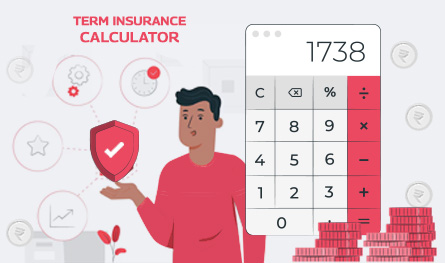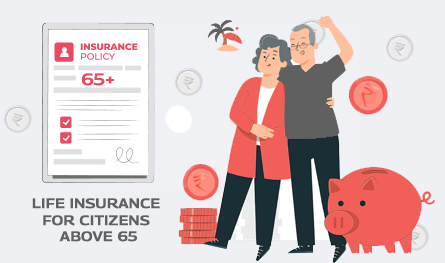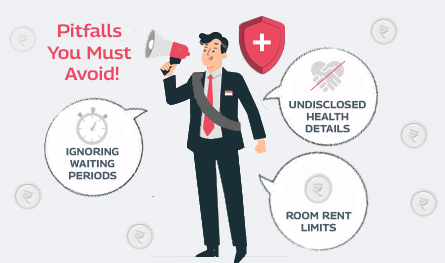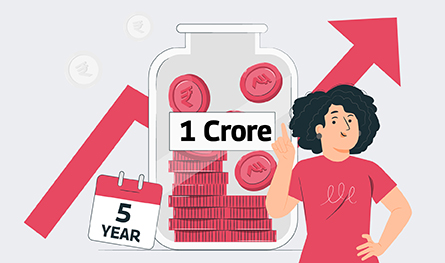Related Articles
 Jan 08, 2025
Jan 08, 2025
Is Varicose Vein surgery covered under the health insurance policy in India
 Health Insurance
Health Insurance
.png)
.png)
We humans always find pleasure in quantities, our mantra being ‘more the merrier’. Who is satisfied with only one of anything? Even in case of health insurance plans we tend to hold more than one policy to ensure a comprehensive coverage. With the medical costs touching the roof, holding multiple plans is even recommended by experts. So, yes, when you talk about a family floater health plan too, you can have more than one insurance plan in place to cover your family’s health insurance needs.
Multiple floater plans are beneficial because there is a lower chance of exhausting your Sum Assured if there is another policy at your disposal. Given the rising healthcare costs and level of under-insurance in health covers, it would be advisable to go for additional protection plan.
What is a Family Floater Policy?
So far so good, but what about making a claim? This might seem the trickiest part. However, the claim settlement process of multiple policies is actually very simple. Here’s how it works:
You have the freedom to choose any insurer to get your claim settled if the claim amount is well within the chosen Sum Assured limits. For instance, if you have two policies of Rs.2 lakhs and Rs.3 lakhs each and the claim amounts to Rs.1.5 lakhs, either of the insurers can be approached to get the claim settled.
If the claim, instead, amounts to Rs.4 lakhs, you can avail cashless facility from your Rs.3 lakh policy and bear the remainder from your pocket. When the claim is settled, you should collect from TPA the Claim Settlement Summary, Discharge Form, and attested copies of all medical bills and submit them to the other insurer for reimbursing the excess claim you bore. After the relevant documents are processed, the amount is reimbursed.
If you are aware in advance the claim amount is likely to exceed the Sum Insured under each of the policies, you can inform both TPA’s beforehand about sharing of the cashless benefit or inform 2nd insurer of the likely claim for residual amount.
If the policy type is same, in certain cases, first insurance company can directly approach the second insurance company for the additional expenses.
So, having multiple policies is a good tactic and when you know the claim procedure, your health insurance experience becomes even better.
However, recently, insurance companies have come up with something even better. Instead of opting for two family floater plans, it makes a lot more sense to take a Top Up Health Insurance Plan along with your existing Family Floater Plan. That way, the aggregate premium paid would be lesser than 2 family floater plans and hence can provide higher coverage as well.

Paybima Team
Paybima is an Indian insurance aggregator on a mission to make insurance simple for people. Paybima is the Digital arm of the already established and trusted Mahindra Insurance Brokers Ltd., a reputed name in the insurance broking industry with 17 years of experience. Paybima promises you the easy-to-access online platform to buy insurance policies, and also extend their unrelented assistance with all your policy related queries and services.


Let’s be honest – life insurance planning isn’t exactly someone’s weekend hobby. It is the financial equivalent of flossing: we understand its importance, but we tend to put it off. But somewhere between balancing work and life, you might realise you need to have a solid plan in place – just in case.


If you think of life insurance, chances are you are picturing something people buy in their 30s or 40s. But what if you are 65 or older and just getting started? The good news is that you are never too late. Whether you are thinking of easing the financial burden on your family, covering final expenses, or simply leaving behind a legacy, there are life insurance options tailored just for you.
This article will be a guide to life insurance for senior citizens above 65 years, explaining why it is important, the type of insurance options, and how to get the right policy for you.


Health insurance plans are purchased with the hope of medical protection in times of need. However, sometimes it ends up being a source of surprise and disappointment. This mostly happens when people rush to buy health insurance plans, often overlooking essential aspects. Ignoring waiting period clauses, misunderstanding exclusions, and being unaware of sub-limits can lead to unwanted problems in the future.


If you are looking at investment policies offering INR 1 Crore in 5 years, we talk about some excellent plans in this post to help you choose the best one and reach your goal. However, it is important not to get swayed. Doing proper research and taking advice from financial or insurance advisors is important. Learn about such investment plan in this post.

The last few years have made it very clear that having health insurance is essential for everyone. Whether you are a young professional or a senior citizen, are single or have a family to support, health insurance cannot be ignored. Keeping this in mind, health insurance companies offer comprehensive plans that suit people with varied insurance needs.
